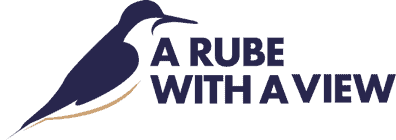Dear Team, The last five days have been our busiest.
We trapped shorebirds throughout the period racking up two catches each of red knots, ruddy turnstones and sanderlings. One goal is to maintain the band density to develop resight estimates throughout the flyway, where we band the majority of red knots. Equally important is the estimation of P180, or the percentage of birds that gain enough weight to breed in the Arctic successfully. Knots need to reach 180 grams, ruddy turnstones 155 grams, and sanderlings 85 grams. We assess the condition of these species with our catches and compare that to previous years during the same period. When egg densities were much higher than today, over 80% of knots reached good weight. In the last 5 years it has not broken 45%. Given our catch on the May 25th , its unlikely to be any higher.
We also completed two baywide counts, and the results were mixed. The peak count for red knots was about 12,000, most located on the New Jersey side. This is more than last year’s 6800, but far lower than the 30,000 seen in 2019. The turnstone count is similarly lower, as are semi-palmated sandpipers.
We continue our resighting red knots with unique ID leg flags to allow for the estimation of numbers using a capture-recapture model developed by James Lyons of USGS. The method relies on resighting birds with leg flags inscribed with a unique code that spotters can see with a spotting scope. Along with a field estimate of the ratio of flagged to unflagged birds, the model creates estimates at three-day intervals. Although the model is well justified, it has only been used to estimate numbers but has never really been field-tested against a known numbers of birds. In Delaware Bay, the modeled estimate are based on the birds seen at least, and may provide a good estimate of the number of birds passing through the bay. It also seems to overestimate the number that relies on horseshoe crabs’ eggs.

A red knot caught in 2017 with the unique code DT one of the first birds banded with a flag in 2003.
It seems an innocuous difference, but it proves to be a millstone around the stopover’s neck and contributes to its decline. In the last two years, our ground, boat, and aerial counts have dramatically declined compared to previous years. The long-standing aerial survey started in 1981 and went from highs of over 90,000 red knots in the ’80s to only 6800 in 2021. In any other place globally, especially a stopover as famous as the Delaware Bay stopover, the decline would alarm. But it hasn’t (at least among some) in Delaware Bay, because the estimated number based on the capture-recapture model saw almost no difference. The vastly different numbers should have triggered scientific scrutiny to determine the reason for the difference. Instead, the USGS and ASMFC statisticians ignore the aerial ground count estimates as they also ignore the low egg densities. It’s not an esoteric issue for the million horseshoe crabs from Delaware Bay that must die each year for the companies that profit from them.
Thanks to Environment Canada and the USFWS, we could attached two kinds of satellite tags this year. LoTek’s Pinpoint tag has a battery and a limited number of points to track the bird’s movements. The tag can be programmed over an entire year but is limited to 60 points. We attached Pinpoints in Brazil and South Carolina, and I reported on the early findings of those birds in my last update. The newer Sunbird tags have a solar panel instead of a battery and can indefinitely provide as many as 6 points a day, although the bird will lose the tag after about 4-5 months.

Mapped location of a red knot with a satellite transmitter in Delaware Bay NJ

The Sunbird tags we attached here in the bay provide an unprecedented and intimate view of the life of a red knot on the bay. The tags must have sunlight to charge, so the data can be unpredictable, but we have three that provide a real-time understanding of the extent of the movements of birds ( see below).
Jane Galetto and the volunteers from Citizens United to Protect the Maurice River continue to provide our team with delicious meals every night. Julian and Karla Rossini barbecued a leg of lamb and beef tenderloin with a secret chimichurri sauce , Wilma Coifman braised chicken, and Rick Guariglia prepared a delicious dinner of Asian food, but all the cooks provided good food and company to improve our spirits . Jane cooked two turkeys for our annual May Thanksgiving dinner. She also hosted a lovely celebration at her home along the Maurice River, where Peter Fullagar received an award for his dedication to the Shorebird Project.

Julian Rossini photos by J Burger

Rick Guarigli. photos by J Burger
The stewards supported by Conserve Wildlife Foundation and the American Littoral Society had a particularly difficult time this year. The lack of eggs and peregrine falcon attacks have left our most well-known beaches, those from Reeds to Pierces Point, empty of shorebirds. Yet stewards like Arturo and Brianna Roma were fielding questions from all the disappointed visitors. Other stewards have had to endure rants from a few people at Norburys Landing about beach closures and they don’t even live in the area. Generally, our stewards help residents and visitors know our protection only lasts as long as the birds are here, and we all fight for the interests of the people on the bay.

Arturo and Brianna Roma
I want to give a heartfelt thank you to all the volunteers that support our efforts. It would be impossible without you.
